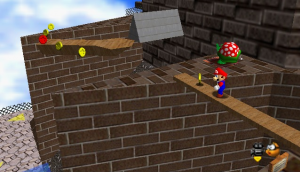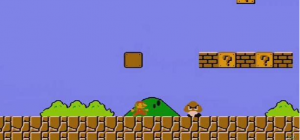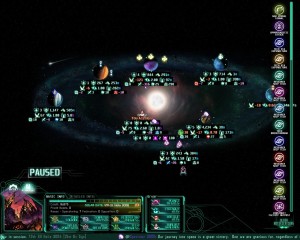Teaching someone how to play your game is one of the toughest parts of being a game designer and one that I’ve spent multiple posts talking about. Many people learn better through instructions, while others prefer visual aids and it’s hard to develop the perfect tutorial.
But for today’s post, I want to look at a shortcut that developers have used whenever they need to explain new forms of game design to players in the form of organic tutorial design.
Organic Tutorial Design:
Organic tutorial design by my definition is where a game developer builds the learning or tutorial of the game directly into the level design itself as opposed to separate learning conditions.
How it works is that the level order and design are developed to present the mechanics in order of complexity and challenge to the player. In this way, the player is learning how to play the game simply by going through the levels as opposed to stopping and doing tutorial levels or reading text.
New mechanics are presented first in the form of just the new mechanic in an open area without any obstacles or enemies to worry about. Then the mechanic is repeated requiring more input or an advanced use. Finally the player is tested by applying the mechanic to a situation where they can be hurt or killed if they fail.

Organic tutorial design is about teaching the player about the game mechanics directly through playing the title, thanks to clever level design
Depending on the game and mechanics in question, the beginner, moderate and advanced lessons may not happen in that order.
Some cases the designer may present multiple beginner mechanics first and then go to some moderate lessons. It’s important to note that these “lessons” don’t have to be separate levels but can simply be sections in a level. Depending on the game, you could run through all the beginner lessons using a series of 2 second sections in the very first level.
By presenting the mechanics in this way, the developers forgo the need to stop the game for tutorials and make it easier for the player to learn how things work.
On the Job Training:
What makes organic tutorial design work so well is that the player is learning how these mechanics work via situations and challenges that the game is built around. By seeing the mechanics this way, it allows them to start building a knowledge base of all the rules and systems of the game. More importantly, it allows them to extrapolate the mechanics for advanced challenges easier.
This is a far cry from tutorials in strategy games which often take place in some specifically tailored map or scenario without any regards to how the game is actually played. Also, a wall of text explaining a mechanic doesn’t show the player how that mechanic is used and why they’re not getting the same benefit compared to building the tutorials directly into the level design.

Super Mario’s famous world 1-1 is a great example of organic tutorial design: Teaching the player thanks to obstacle and item placement
Some great examples of organic level design would be the level designs from Nintendo and Valve.
You’ll find that in most 3D Mario games, the very first stage is designed simply to let the player go around and practice jumping and Mario’s basic moveset (if there is a hub area, then that will be the free space.)
As the game goes on, new mechanics are introduced via simple situations without any threats to the player. It’s not until the player gets to the end where the developers start challenging them with advanced situations built from all the mechanics.
Valve’s best example would be the level designs in Portal and Portal 2. In their commentary tracks, they talked about how they presented the new mechanics in order for someone to learn through doing instead of by watching a tutorial. Every new rule or way to use the portal gun was first introduced by a basic challenge with no threats to the player.
It wasn’t until the player reached the end of a series of puzzles before they started dealing with traps and turrets. By the end of the game, the puzzles obviously became more dangerous from the start of a section and escalated from there as the player had learned all the skills from previous areas.
Another great example for budding game designers is the original Mega Man series and how each level’s unique twist was always presented in a basic form, before challenging the player further.
Lesson Planning:
Arguably the only downsides to organic tutorial design are the added work by the game developer and its limitation based on the type of game. Titles that deal with abstraction like strategy and RPGs cannot use organic level design as there aren’t “levels” per say in these games.

Strategy games due to their abstracted and multi system design are the hardest to create an organic tutorial
However the philosophy of teaching the player over the course of playing a game can be applied to these genres. This could be done by having a starting area with the mechanics condensed down.
With strategy games it’s a lot harder due to the abstraction and the best ways I’ve seen were to follow the route of Let’s Plays where the tutorial walks someone through playing the game as opposed to just explaining mechanics and systems.
Just remember, organic tutorial design is not about stopping the player in order to teach new mechanics, but they should be explained during the actual gameplay.
Figuring out the logical order to explain and show your game mechanics can be tough for a developer, because you were the one who put the whole thing together and it’s not just about complexity but how everything fits into playing the game. But when it’s possible, organic tutorials are the best for showing someone how the mechanics are used within your title.


